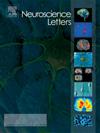在大鼠颅内动脉瘤模型中,LTBP2 下调 FGF2 以抑制血管平滑肌细胞增殖和血管重塑。
IF 2.5
4区 医学
Q3 NEUROSCIENCES
引用次数: 0
摘要
这项研究探讨了潜伏转化生长因子β结合蛋白2(LTBP2)在颅内动脉瘤(IA)中的作用。大鼠先进行颅内动脉瘤建模,然后立体定向注射针对 LTBP2 的短发夹 RNA(shLTBP2)。血栓素-伊红(HE)染色用于评估IA模型和血管重塑。用 shLTBP2、LTBP2 过表达质粒和成纤维细胞生长因子 2(FGF2)过表达质粒转染大鼠血管平滑肌细胞(VSMC)。通过 qRT-PCR 和 Western 印迹检测了 LTBP2、FGF2 和线粒体凋亡相关因子(Caspase-3、Cyt-c、Mcl-1)的 mRNA 和蛋白表达。细胞计数试剂盒-8、EdU 检测法和流式细胞术检测了细胞活力、增殖和凋亡。在 IA 大鼠中检测到 LTBP2 上调,FGF2 下调。敲除LTBP2可促进血管重塑和Mcl-1水平,抑制细胞凋亡和Caspase-3与Cyt-c的表达。此外,在大鼠血管内皮细胞中,LTBP2敲除可增强细胞活力、增殖和FGF2水平,抑制细胞凋亡,而过表达LTBP2则产生相反的效果。FGF2 的过表达促进了大鼠血管内皮细胞的增殖和 Mcl-1 水平,抑制了细胞凋亡以及 Caspase-3 和 Cyt-c 的表达,这也逆转了过表达的 LTBP2 对这些方面的影响。总之,LTBP2能下调FGF2,从而抑制IA大鼠模型中VSMC的增殖和血管重塑。本文章由计算机程序翻译,如有差异,请以英文原文为准。
LTBP2 down-regulated FGF2 to repress vascular smooth muscle cell proliferation and vascular remodeling in a rat model of intracranial aneurysm
This work probed into the role of latent transforming growth factor beta binding protein 2 (LTBP2) in intracranial aneurysm (IA). The rats underwent IA modeling and then stereotactic injection of short hairpin RNA against LTBP2 (shLTBP2). Hematoxylin-eosin (HE) staining was employed to assess IA model and vascular remodeling. Rat vascular smooth muscle cells (VSMCs) were transfected with shLTBP2, LTBP2 overexpression plasmid and fibroblast growth factor 2 (FGF2) overexpression plasmid. The mRNA and protein expressions of LTBP2, FGF2 and mitochondrial apoptosis-related factors (Caspase-3, Cyt-c, Mcl-1) were tested through qRT-PCR and Western blot. Cell viability, proliferation and apoptosis were examined by cell counting kit-8, EdU assay and flow cytometry. The up-regulated LTBP2 and down-regulated FGF2 were detected in IA rats. LTBP2 knockdown promoted vascular remodeling and Mcl-1 level, and restrained cell apoptosis and expressions of Caspase-3 and Cyt-c in IA model rats. Moreover, LTBP2 knockdown potentiated cell viability, proliferation and FGF2 level, and repressed apoptosis in rat VSMCs, while overexpressed LTBP2 exerted opposite effects. FGF2 overexpression promoted proliferation and Mcl-1 level, and inhibited apoptosis and expressions of Caspase-3 and Cyt-c in rat VSMCs, which also reversed the effects of overexpressed LTBP2 on these aspects. Collectively, LTBP2 down-regulates FGF2 to repress VSMCs proliferation and vascular remodeling in an IA rat model.
求助全文
通过发布文献求助,成功后即可免费获取论文全文。
去求助
来源期刊

Neuroscience Letters
医学-神经科学
CiteScore
5.20
自引率
0.00%
发文量
408
审稿时长
50 days
期刊介绍:
Neuroscience Letters is devoted to the rapid publication of short, high-quality papers of interest to the broad community of neuroscientists. Only papers which will make a significant addition to the literature in the field will be published. Papers in all areas of neuroscience - molecular, cellular, developmental, systems, behavioral and cognitive, as well as computational - will be considered for publication. Submission of laboratory investigations that shed light on disease mechanisms is encouraged. Special Issues, edited by Guest Editors to cover new and rapidly-moving areas, will include invited mini-reviews. Occasional mini-reviews in especially timely areas will be considered for publication, without invitation, outside of Special Issues; these un-solicited mini-reviews can be submitted without invitation but must be of very high quality. Clinical studies will also be published if they provide new information about organization or actions of the nervous system, or provide new insights into the neurobiology of disease. NSL does not publish case reports.
 求助内容:
求助内容: 应助结果提醒方式:
应助结果提醒方式:


